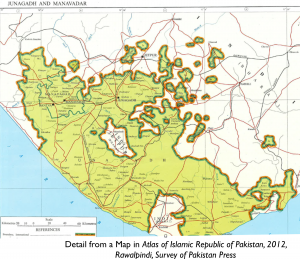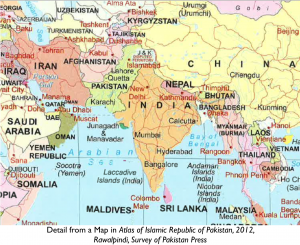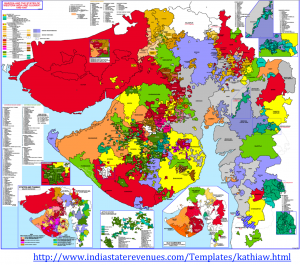If you want to greet the new year with some yarns that make you laugh, one way is to log on to the Pakistani foreign affairs ministry's Web site
forisb.org - Pakistan Resources and Information. This website is for sale! and locate the piece titled "Jammu & Kashmir Dispute".
That article is so compressed with quarter-truths, half-lies and full- falsehoods that you end up asking, "What's the difference between propaganda and prevarication?" The correct answer to that right now is: "The same as between Pervez and Musharraf."
The article's lead-up to J&K is through Junagadh and Hyderabad. The following is the bludgeoned background it records of how those two princely states in the British rule of India became victims of "India's insatiable desire to grab territory".
"The Muslim ruler of Junagarh, a state with Hindu majority population, announced his decision to join Pakistan. India responded by aiding and abetting the establishment of a so-called "Provisional Government" of Junagarh on Indian territory, which attacked Junagarh with Indian connivance and support. Subsequently Indian forces also invaded Junagarh, despite protests from Pakistan, in order to "restore law and order". A farcical plebiscite was organized under Indian auspices, and India annexed Junagarh. Similarly, in Hyderabad, a Hindu majority state, the Muslim ruler of the state wanted to retain an independent status. India responded by attacking Hyderabad and annexed the state by force. India sought to justify its aggression against Hyderabad and Junagarh on the plea that the rulers of Junagarh and Hyderabad were acting against the wishes of their people."
Next comes the hammer blow on India's alleged double standard. The Pak embassy essay says, "In Jammu and Kashmir State, the situation was the reverse. The ruler of the State was a Hindu, while the population was overwhelmingly Muslim and wanted to join Pakistan. In this case, India consistently pressurized the Hindu Ruler to accede to India."
Since the truths of Junagadh's and Hyderabad's homecoming are relatively unknown to today's generation of Indians and since the truths should necessarily concern all Indians here and abroad, even as they are now valiantly countering Pakistan's trickery on its tenet of terrorism, those two old bits of history are recalled here today.
First, the facts -- as recorded in The Story of The Integration of The Indian States (Orient Longman, 1956) by V P Menon, ICS, Secretary of the States Department of free India.
Yes, the nawab of Junagadh did decide to accede his State to Pakistan -- that was on August 15, 1947. Critical to note was that Pakistan's then prime minister, Liaquat Ali Khan, had argued then that a ruler had the absolute right to so accede without reference to the moral or ethnic aspects of accession. (No double standard then in J&K as Pakistan would have the world believe.) And yes, a referendum was indeed polled on February 20, 1948, when, out of the 190,870 who exercised their franchise, 91 (sic) voted in favour of Pakistan.
What is fiction is that Indian forces entered Junagadh on October 9, 1947. The fact, instead, is that in mid-September that year it was Junagadh, as a part of Pakistan, that sent troops into Babariawad (a group of 51 villages) and Mangrol (a teeny princely State) -- both entities located in the heart of Junagadh and both of which had already acceded to India. These two pockets inside Junagadh State but outside its suzerainty were reclaimed by India on November 1, 1947, with a civil administrator accompanied by a small force.
However, the most important facts now being conveniently cloaked by Pakistani propaganda-cum-prevarication are:
On October 27, 1947, the dewan of Junagadh wrote to Jinnah describing the disastrous consequences following Junagadh's accession to Pakistan, when over 100,000 Hindus fled the State.
On October 31, 1947, the same dewan wrote to the Secretary, Ministry of Foreign Affairs and Commonwealth Relations, Pakistan, that the State's people were completely disheartened, and
On November 8, 1947, saddled with an administration that had come to a standstill, the same dewan officially handed over the reins of Junagadh to the Government of India "pending an honourable settlement of the several issues involved in Junagadh's accession".
On November 9, 1947, the Government of India sent a telegram to Pakistan's prime minister saying it "had no desire to continue this arrangement and wished to find a speedy solution in accordance with the wishes of the people". Thus the referendum of February 1948 when, to repeat, 91 voters out of 190,870 opted for Pakistan.
Another fact was that towards the end of October 1947, before the last ignominious step, the nawab of Junagadh fled by air to Karachi with his bag, baggage and begums, the State's entire cash balances as well as the treasury's shares and securities in tow!
The above course of history was inevitable considering that
Junagadh State was a nightmarish jigsaw puzzle of geography. Excepting the Arabian Sea in the south and southwest, it was surrounded by several small States of the Kathiawar region that had acceded to India. Junagadh had no contiguity with Pakistan by land while its distance by sea to Karachi was about 300 miles. Further, while several pockets of Junagadh territory were dispersed in the neighbouring States, parts of other States that had opted for India were interspersed with Junagadh territory.
The princely rulers and commoners of Kathiawar were greatly agitated at Junagadh's accession to Pakistan.
Junagadh's nawab was "an eccentric of rare vintage" whose "chief preoccupation in life was dogs, of which he owned hundreds". Tales abounded of harassment of the majority Hindu community in the State.
Aided by the princes of neighbouring States, a Congressman, Samaldas Gandhi, began running a provisional government which succeeded in creating an economic blockade whereby traders refused to do any business with Junagadh, the State's food situation deteriorated progressively and its revenue substantially decreased.
No wonder then that Junagadh's dewan, Sir Shah Nawaz Bhutto, also fled India --for Karachi. The date was November 8, 1947. On the next day, the Government of India had taken over Junagadh's administration. QED.
Hyderabad's amalgamation with the rest of India was more complex, more explosive. Pakistan dubs it a mere "annexation by force", while Indians recall it as "police action". The actual event took bizarre, devious and dangerous forms before it finally happened. The facts are revealed in Menon's book referred to earlier and, remember, the book's credibility has never been known to be challenged by any Pakistani military dictator or elected prime minister. Below are highlights extracted from Menon's classic account.
Over 85 per cent of Hyderabad State's population was Hindu but the civil services, police and army were a close preserve of Muslims, with the ruler, called the nizam, nurturing ambitions of being an independent member of the British Commonwealth after the British Parliament's decision to quit India.
India offered a referendum, the Nizam refused, but was agreeable to a treaty short of accession and wanted to deny to the Dominion of India the right of legislation on defence, external affairs and communications.
A Standstill Agreement was signed on November 29, 1947. The nizam promptly appointed a Pakistani as president of Hyderabad State's Executive Council, loaned Rs 20 crore (Rs 200 million) to Pakistan in the form of Government of India securities, but wrote secretly to Lord Mountbatten, Governor-General of India, that he would not accede to Pakistan.
Most of the Indian Army was withdrawn from Hyderabad in December 1947.
The nizam's government issued two ordinances restricting export of all precious material from Hyderabad to the rest of India and declaring that Indian currency was no more to be legal tender in the State. It also appointed a PRO in Karachi without reference to the Government of India.
The Razakkaars (a private militia enjoying the nizam's patronage) created communal havoc in the State during the day while communists ruled by night in the border districts of Andhra and Hyderabad, forcing Madras to ask for Indian military aid.
The Government of India wrote in detail to the nizam pointing out violations of the Standstill Agreement; Mountbatten objected to the two ordinances.
Hyderabad State was not agreeable to give legislative powers to the Indian government over the subjects of defence, external affairs and communications. Instead, it wanted more concessions, including freedom in trade, economic and fiscal matters.
A situation of extreme tension prevailed in June 1948. Jawaharlal Nehru conceded, "It is impossible for an independent state to have foreign territory right in its heart."
The nizam requested the president of the United States of America to intervene; the request was refused. In late August 1948, a Hyderabad State delegation presented its case to the United Nations Security Council.
The Indian Army marched into Hyderabad on September 13, 1948. The State army surrendered four days later.
The nizam gave in. He first released K M Munshi, India's agent-general, from house arrest, then withdrew his case from the UN on September 23, 1948.
On November 23, 1949, the nizam issued a firman (edict) accepting the Constitution of India, to be formed by the Constituent Assembly of India then in session, as the constitution of Hyderabad State. QED.
rediff.com: Arvind Lavakare nails Pakistan's lies on Junagadh and Hyderabad













